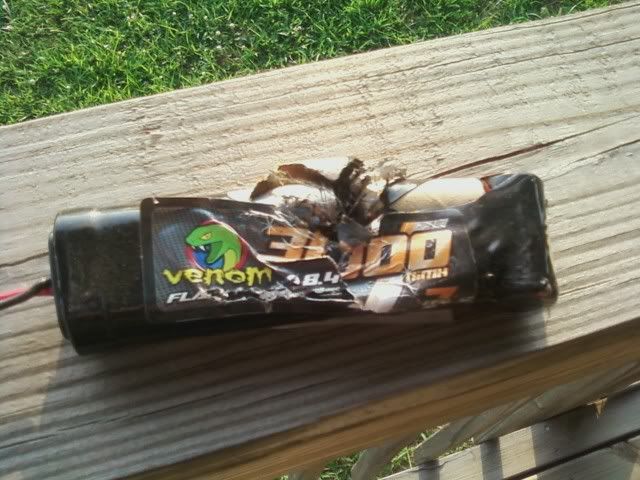AYKBOBCAT wrote:OK then what is needed to get into lipos? I know my charger does lipo (it says on it) but what are these balancer things? Do you charge lipos like nicad or nimh? Do they need special care if you don't use them often?
I feel like batteries are getting more and more complicated... I miss the time when you could charge a pack straight from you car battery with "booster" cables.....
Maybe I should just get back to Nicad!
To go to LiPo, you will need 4 things.. (I'll try to keep it simple)
1.. Some LiPo batteries, preferably with a hard case, and if you want to race, ROAR approved packs.. 2S 7.4V packs are the equivalent to the 7.2V 6 cell NiCd/NiMh packs you are using now..
A LiPo cell is 3.7Volts each, so 2S means 2 x 3.7V cells connected in Series = 7.4V.. The Capacity in mAh is the same as for NiCd/NiMh packs, the higher the capacity the longer the runtime.
The only other consideratrion is the "C" rating (eg. 20C, 30C etc), which is the maximum discharge current from the packs.. Say you have a 5000mAh (5Ah) 20C 2S lipo, then the maximum discharge current will be 5A x 20 (C) = 100A.. For most applications 5000mah 20C packs would be fine, but higher mAh and "C" ratings can give more punch if you are racing.. If you are running 4.5T BL motors in on-road, or running 1/8 EP, then you may want to consider 40+C batteries..
A fully charged 2S Lipo will have an output voltage that must not exceed 8.4 Volts (or 4.2V / cell).. A LiPo also MUST NOT be discharged lower than (typically) 6Volts (ideally, no lower that 3v/cell)..
2.. A charger that is designed to balance charge liPo's at 1C.. If you use a regular NiCd/NiMh charge profile (i.e. peak detection charge) with a LiPo you will destroy it (= LiPo Fire)..
1C means one times the capacity, so if you have 6500mAh (6.5Ah) LiPos, then your charger will need to have an output charge of at least 6.5 Amps..
Balance charging is a process whereby the charger monitors each cells voltage in the pack (via the balance lead) to ensure that the cells voltages are kept equal throughout the charge process, otherwise the individual cells in a charged Lipo (8.4V) may not each be 4.2volts as the should, one could be 4.18 and the other 4.22V..
You dont need anything overly expensive, a charger like the IMAX B6 would suffice for most people..
3.. A suitable LiPo charging sack, or other device that will contain any flame in the event of a LiPo failure during charging.. I have heard of people using Ammo boxes, metal cash boxes, even ceramic flower pots, but I prefer a LiPo Sack.. I store my LiPo's in the LiPo sack, inside an ammo box and I store them in a cool place..
4.. Some type of Low Voltage (LV) cutoff or alarm for your car... As mentioned above, liPo's dont like to be discharged below 3V/cell (6V for a 2S pack) so you need a cutoff.. some modern ESC's will have them built in, so they only need to be activated.. For older ESC's, you can fit a LiPo LV cutoff, such as the Novak Smartstop.. OR if you are bashing (i.e. not racing), you can get inexpensive alarms that connect to the balance lead of the LiPo whilst running, and will sound when the LiPo is flat.. (search LiPo Alarm on ebay)
IMO, LiPo's have been one of the greatest steps foward in RC racing.. You do not need to discharge them before recharge like you do with NiCd or NiMh.. They dont get as hot during a run, so they need very little cooling before being recharged.. They have a "flatter" discharge curve, so give the appearance of having a longer runtime that NiCd/NiMh.. They are Lighter, and generally more powerful that NiCd/NiMh..
Look, I'm not saying that they dont need to ne handled with some care and respect, but if you can overcome all of the negativity surrounding them that the are really dangerous, IMO, they are the best battery type on the market today..


